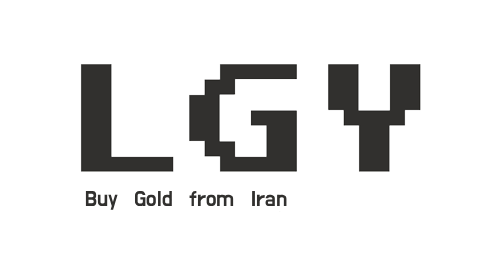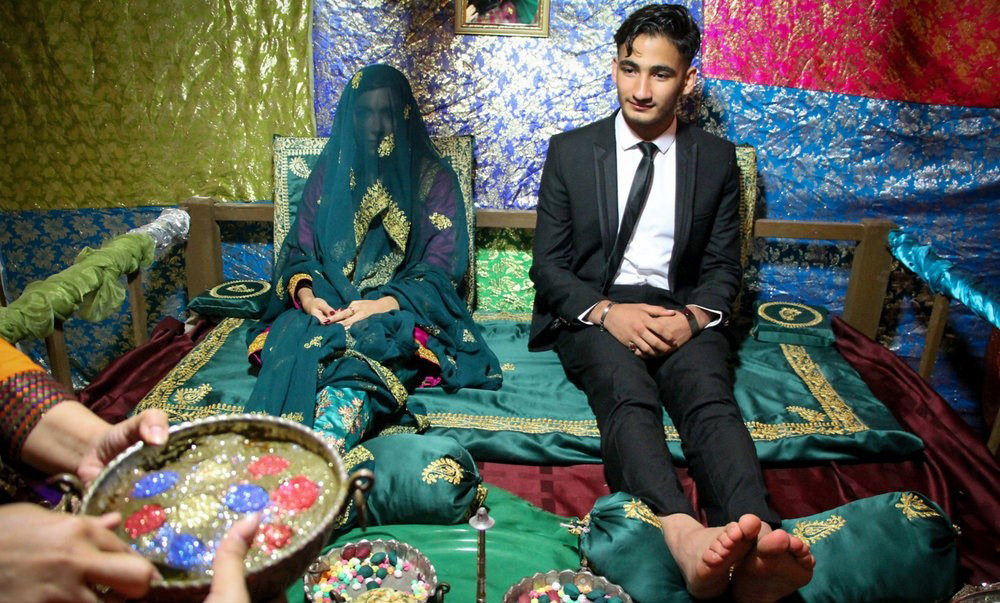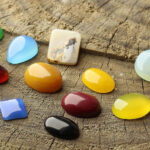
The Color and Meaning of Semi-Precious Stones in Iranian Jewelry
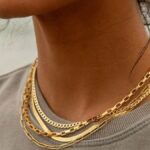
Incorporating Iranian Jewelry into Everyday Style
The Role of Jewelry in Traditional Iranian Celebrations
Jewelry holds a prominent role in Iranian weddings and special occasions, symbolizing love, prosperity, protection, and the joining of families. For centuries, Persian culture has embraced the tradition of gifting and wearing exquisite jewelry to mark important milestones, with each piece carefully chosen to carry cultural and spiritual significance. Whether it’s the bride’s adornment, gifts exchanged between families, or jewelry passed down through generations, these timeless traditions are at the heart of Iranian celebrations.
In this post, we’ll explore the role of jewelry in traditional Iranian weddings and other important occasions, shedding light on its significance and the most common types of jewelry used during these special events.
1. Jewelry in Traditional Iranian Weddings
In Iranian weddings, jewelry symbolizes not only beauty and adornment but also the promise of prosperity, protection, and family bonds. Jewelry is an essential part of the wedding ceremonies, both in terms of what the bride wears and the jewelry gifted as part of the marriage tradition.
The Bride’s Jewelry: Symbolism and Significance
The bride is often adorned with gold and gemstone jewelry, which is carefully selected for its cultural significance and beauty. Each piece represents different aspects of the bride’s future, from protection against the evil eye to ensuring prosperity and good fortune in her new life.
- Gold Jewelry: Traditionally, the bride is adorned with gold jewelry, symbolizing wealth, success, and strength in her marriage. Gold necklaces, bracelets, and earrings are common, often featuring intricate designs like filigree or calligraphy that showcase Persian craftsmanship.
- Turquoise and Agate: Turquoise (Firouzeh) and agate (Aqeeq) are two of the most popular stones worn by brides. Turquoise, in particular, is believed to bring protection and good fortune to the couple, while agate symbolizes strength and stability in the relationship.
- Enamel Work (Minakari): Many brides choose pieces with Minakari (enamel work), which adds vibrant color and artistic detail to gold or silver jewelry. These colorful pieces are often worn as part of the bride’s necklace, earrings, or headpiece.
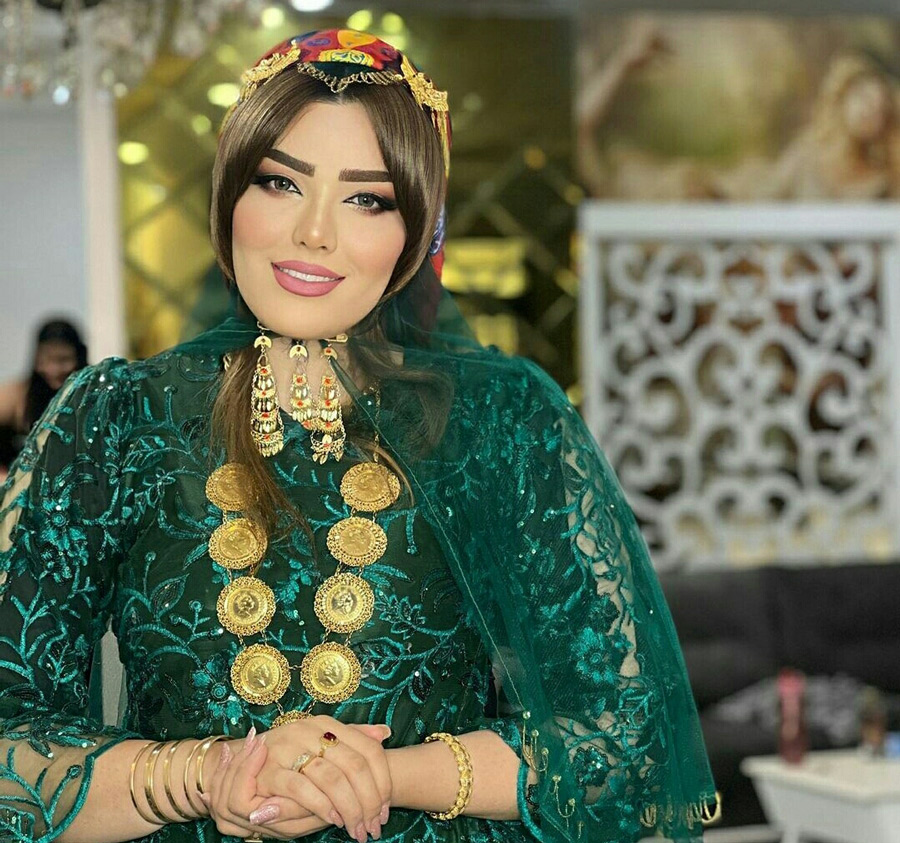
The Bride’s Jewelry
The Gift of Jewelry from the Groom’s Family (Mehrieh)
A key aspect of the Iranian wedding tradition is the presentation of the Mehrieh, a formal agreement between the groom and the bride’s family, where the groom promises to provide specific items or a sum of money in the event of a divorce. Traditionally, gold coins or pieces of jewelry are part of the Mehrieh, representing security and protection for the bride.
- Gold Coins (Bahar Azadi): Gold coins are often given as part of the Mehrieh, symbolizing financial security and prosperity for the bride. These coins can be passed down through generations and are often cherished as family heirlooms.
- Gold Bracelets and Necklaces: The groom’s family may also gift the bride with gold jewelry, including bracelets, necklaces, and earrings. These gifts are meant to signify the groom’s commitment to providing a prosperous and stable life for the bride.
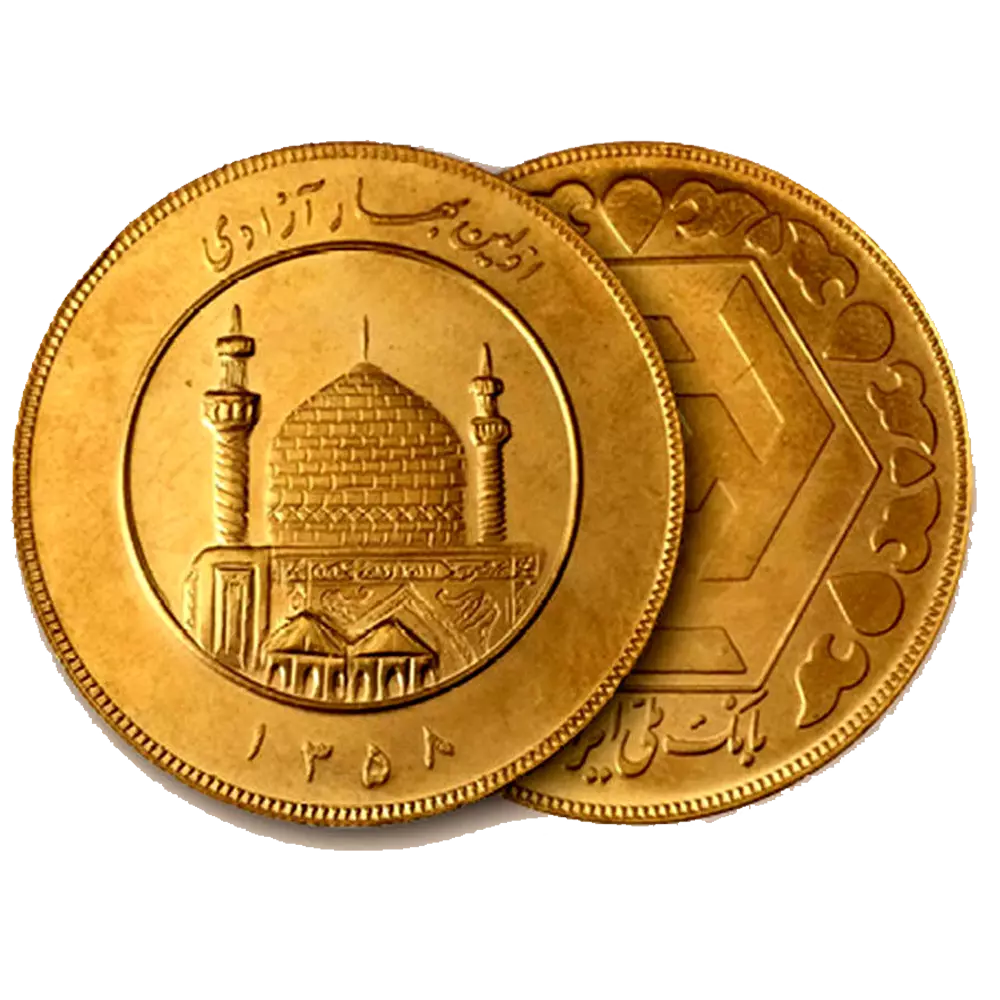
Gold Coins (Bahar Azadi)
Jewelry Passed Down as Heirlooms
In many Iranian families, jewelry is passed down through generations, often becoming a central part of a bride’s wedding attire. These pieces may include antique gold jewelry, rings with semi-precious stones, or necklaces that carry both family history and cultural meaning.
- Family Heirlooms: Passing down jewelry symbolizes the continuation of family traditions and the strengthening of family bonds. These pieces often carry emotional and spiritual significance, as they have been worn by the bride’s ancestors at their weddings.
2. Jewelry in Pre-Wedding Ceremonies and Celebrations
Before the main wedding ceremony, Iranian weddings include several pre-wedding events and rituals, where jewelry also plays an important role. These events are joyous celebrations, filled with symbolic gestures that involve gifting and wearing of jewelry.
The Sofreh Aghd (Wedding Spread)
One of the most important rituals in an Iranian wedding is the Sofreh Aghd, a ceremonial wedding spread filled with symbolic items, including jewelry. This spread represents blessings for the couple’s new life together, with each item carrying deep spiritual meaning.
- Gold Coins and Jewelry: The Sofreh Aghd often includes gold coins and jewelry, symbolizing prosperity and abundance. These items are displayed alongside other symbolic elements, such as candles, mirrors, and fruits.
- Jewelry as a Symbol of Protection: In some families, a piece of turquoise jewelry or an agate amulet may be placed on the Sofreh Aghd to provide protection for the couple against the evil eye and ensure a harmonious marriage.
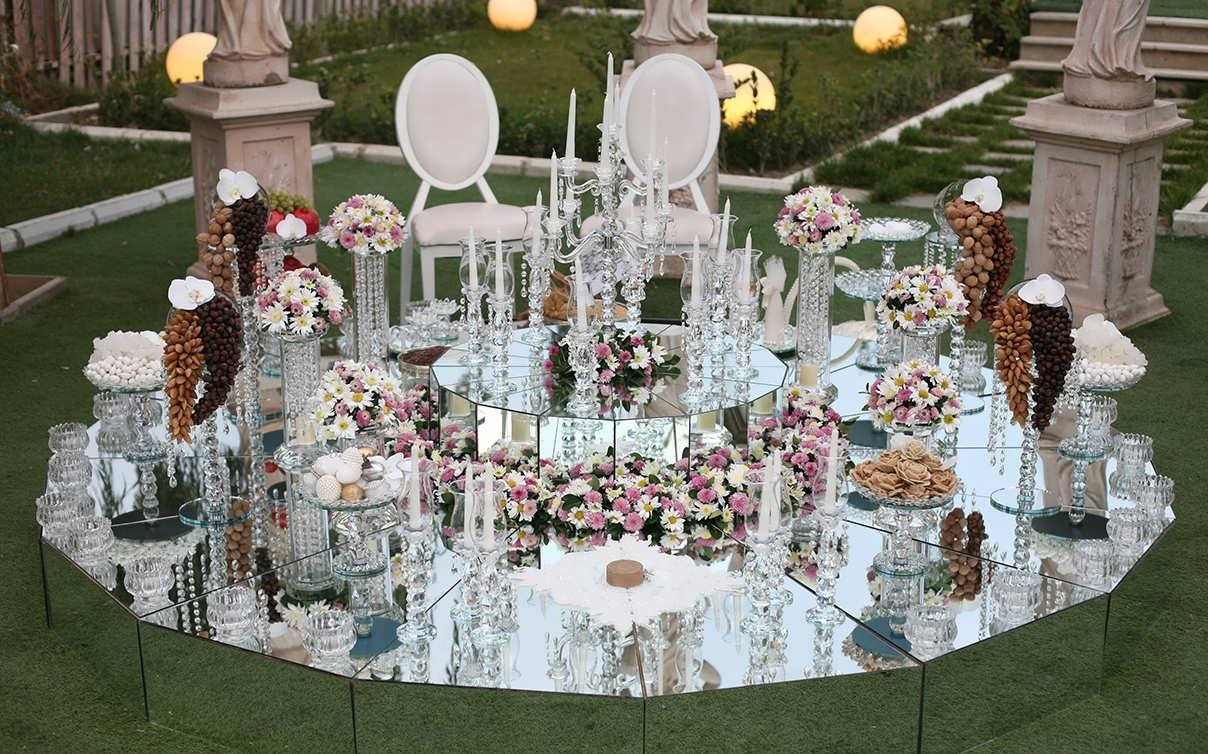
The Sofreh Aghd (Wedding Spread)
Engagement (Namzadi) and Henna Night (Hanna Bandan)
Jewelry plays an essential role in the engagement ceremony (Namzadi) and Henna Night (Hanna Bandan), two pre-wedding celebrations that mark the bride’s and groom’s commitment to each other.
- Engagement Jewelry: During the engagement ceremony, the groom often gifts the bride with a ring or other jewelry, signifying their formal engagement. The bride may also receive other jewelry items, such as gold earrings or bracelets, from the groom’s family.
- Henna Night Jewelry: During Henna Night, the bride is adorned with gold jewelry, often gifted by her family and in-laws. This festive occasion is filled with song and dance, and the bride’s adornment is a central part of the celebration.
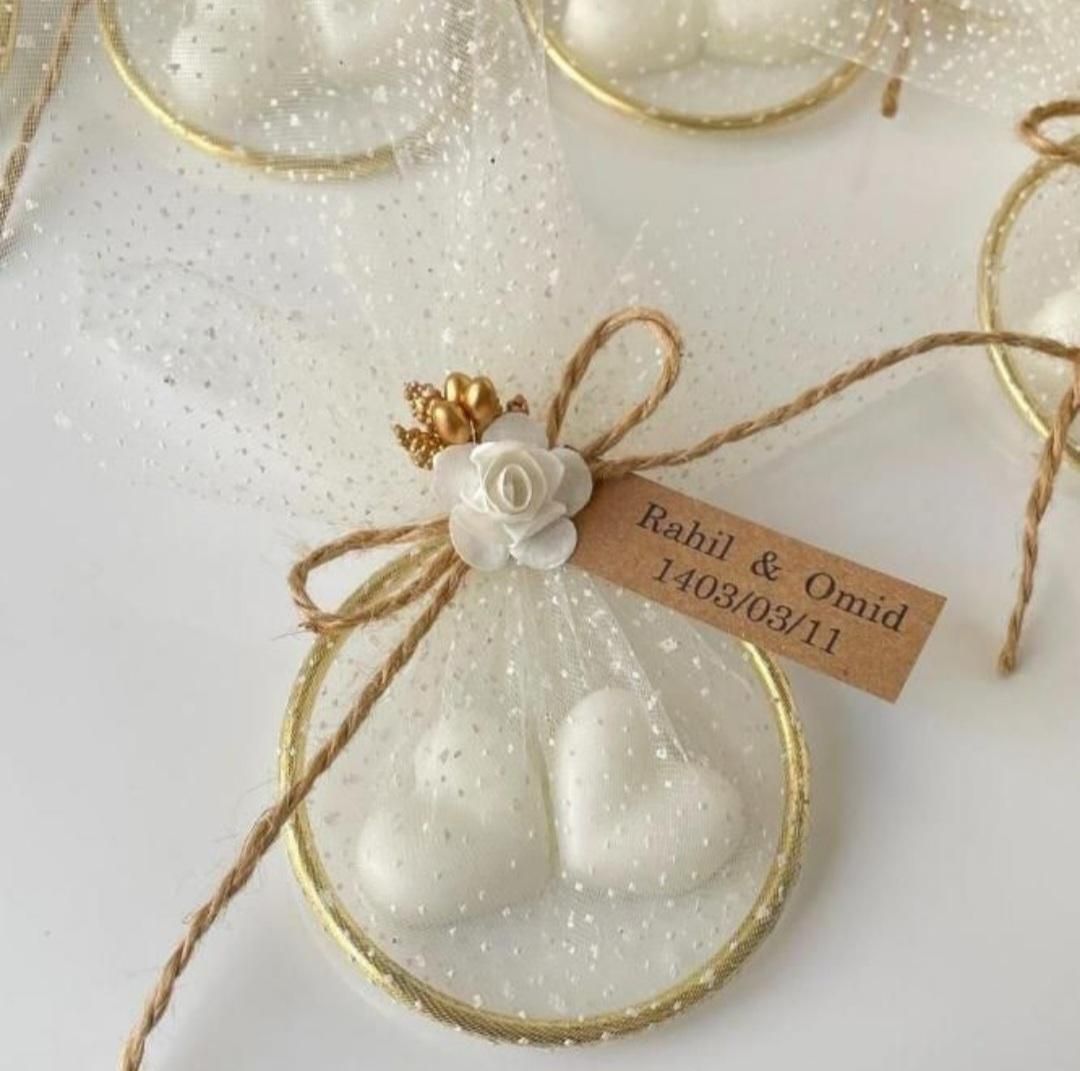
Engagement (Namzadi)
3. Jewelry in Other Special Occasions
In addition to weddings, jewelry plays a significant role in other Iranian celebrations and life milestones, including birthdays, religious holidays, and Nowruz (Persian New Year).
Birthdays and Anniversaries
Jewelry is a traditional gift for birthdays and anniversaries, particularly for women. Gold and silver pieces, often featuring semi-precious stones like turquoise, lapis lazuli, or agate, are common gifts that symbolize love, appreciation, and protection.
- Persian Calligraphy Jewelry: On special occasions like birthdays or anniversaries, it is common to gift jewelry with Persian calligraphy, such as a necklace or bracelet featuring lines from famous Persian poets like Rumi or Hafez.
Nowruz (Persian New Year)
Nowruz, the Persian New Year, is one of the most important holidays in Iranian culture, and jewelry often plays a role in New Year’s celebrations.
- Gold Coins for Prosperity: During Nowruz, it is customary to give gold coins as a symbol of good fortune and wealth in the coming year. These coins are often exchanged between family members and friends.
- Jewelry as a New Year’s Gift: Many families also give jewelry as a Nowruz gift, especially to younger family members, to wish them prosperity, protection, and happiness.
4. The Cultural and Spiritual Significance of Stones in Wedding Jewelry
Many semi-precious stones used in Iranian wedding jewelry carry significant spiritual meanings, making them popular choices for wedding rings, necklaces, and bracelets.
- Turquoise: As one of the most revered stones in Persian culture, turquoise symbolizes protection, prosperity, and spiritual peace. It is often worn by brides and included in wedding jewelry to ensure a blessed union.
- Agate: Agate is associated with strength, protection, and stability, making it a meaningful stone for wedding jewelry. It is commonly set in rings and amulets, worn to provide spiritual protection for the couple.
- Lapis Lazuli: The deep blue of lapis lazuli represents wisdom and spiritual enlightenment, making it a popular stone in wedding necklaces and bracelets. It is thought to foster understanding and communication in the relationship.
Conclusion: The Role of Jewelry in Iranian Weddings and Special Occasions
Jewelry is an integral part of Iranian weddings and special occasions, representing love, prosperity, protection, and family heritage. From the bride’s stunning adornments to the gifts of gold exchanged between families, each piece of jewelry carries a deep cultural and spiritual meaning. Whether it’s the turquoise rings worn for protection or the gold coins gifted as part of the Mehrieh, jewelry continues to play a key role in celebrating life’s most important milestones in Iranian culture.
At LetsGoYelo, we offer a wide range of handcrafted Iranian jewelry, perfect for weddings, celebrations, and special occasions. Explore our collection and find the perfect piece to mark your next important event!
